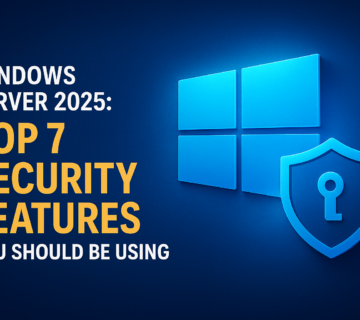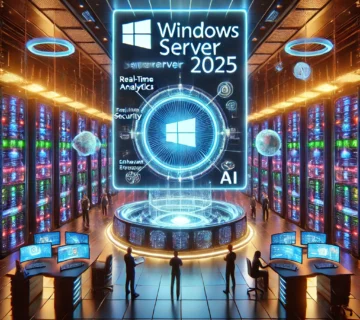Windows Server 2025 Gets Hotpatching Support Beginning July 1, 2025

Microsoft has officially announced that Windows Server 2025 will introduce hotpatching support as a general availability feature starting July 1, 2025. This innovation—previously available only in Azure-based environments—is now being extended to on-premises and multicloud systems via Azure Arc integration.
This monumental shift not only demonstrates Microsoft’s evolving adaptive cloud strategy but also empowers IT administrators to patch servers without reboots, minimize downtime, and accelerate security response.
Introduction to Windows Server 2025 Hotpatching
What is Hotpatching?
Hotpatching is an advanced server update technique that allows administrators to apply updates directly to in-memory processes, eliminating the need for system reboots in most cases.
Why It Matters Now
In today’s security-conscious and uptime-sensitive IT world, hotpatching is a game-changer. Traditional patching requires server reboots, which introduces downtime and delays in applying critical updates. With cyber threats evolving daily, hotpatching bridges the gap between agility and security.
Key Features of Windows Server Hotpatching
Rebootless Updates
Unlike traditional update methods that require reboots, hotpatching injects patches into live processes. This means less downtime, higher system availability, and seamless user experiences.
Patch In-Memory Code
By targeting in-memory code of running processes, updates are applied in real-time, without restarting services or disrupting users.
Higher Server Uptime
Organizations benefit from a significant reduction in service disruptions, ensuring operations remain smooth even during security patch rollouts.
Who Can Benefit from Hotpatching?
On-Premises Users
For enterprises managing local servers, this opens doors to enterprise-grade patching features previously locked to Azure.
Multicloud Deployments
Hybrid IT environments using Azure Arc can now access hotpatching benefits across providers, ensuring consistency.
Hybrid Organizations
Firms that blend cloud and on-prem infrastructures gain flexibility and control without compromising on security.
Microsoft’s Vision for Adaptive Cloud
Integration via Azure Arc
Azure Arc is the enabling bridge for hotpatching beyond Azure. By connecting on-premises servers through Azure Arc, users unlock a unified management experience.
Support for Standard and Datacenter Editions
Whether you’re using Windows Server 2025 Standard or Datacenter, you can take advantage of hotpatching—as long as the servers are Arc-enabled.
How Hotpatching Works
Baseline and Hotpatching Cycles
Microsoft plans a 3-month update cycle:
- 1 baseline month requiring a reboot
- 2 months of non-reboot in-memory hotpatches
Patch Deployment Frequency
Up to eight patches per year will be delivered. Baseline months in 2025 include January, April, July, and October.
Hotpatching Pricing Model
Preview Access and Trial
Currently available in free preview, organizations can trial the service until June 30, 2025.
Subscription Costs Explained
Post-launch, the service will cost $1.50 per CPU core per month, offering a cost-effective route to better security.
Limitations and Requirements
To use hotpatching outside Azure:
- Must run Windows Server 2025 Standard/Datacenter
- Must be enrolled in Azure Arc
- Must subscribe to hotpatching by July 1, 2025
Users in Azure environments continue to receive it at no extra cost.
Hotpatching in Action: Real-World Use Case
Microsoft’s Xbox division used hotpatching to compress weeks of downtime into days, showcasing its efficiency and effectiveness in large-scale operations.
Impact on Cybersecurity
Faster Patch Application
Organizations can react instantly to new vulnerabilities by deploying patches without delay.
Reduced Vulnerability Windows
With no reboot lag, systems are secured faster, minimizing the attack window.
Hotpatching vs Traditional Patch Management
| Feature | Traditional Patch | Hotpatching |
|---|---|---|
| Reboots Required | Yes | Rare |
| Downtime | High | Low |
| Patch Speed | Slower | Faster |
| Complexity | Higher | Streamlined |
SIEM Integration with Hotpatching
Security Information and Event Management (SIEM) tools can be integrated with hotpatching pipelines to provide:
- Real-time monitoring
- Patch validation
- Alerting and logging compliance
Hotpatching in the Supply Chain Context
In a world facing increased supply chain attacks, hotpatching helps maintain secure endpoints and quickly neutralize threats, minimizing lateral movement opportunities for attackers.
Hotpatching and Compliance
Organizations can meet SLAs and regulatory requirements by maintaining both uptime and up-to-date patching schedules.
Future Roadmap and Microsoft’s Plans
Microsoft may expand hotpatching to more editions and enhance orchestration capabilities, possibly integrating AI-assisted update deployment.
FAQs About Windows Server 2025 Hotpatching
1. When will hotpatching be available for Windows Server 2025?
Starting July 1, 2025, as a subscription service for Azure Arc-connected servers.
2. What’s the cost of the subscription?
$1.50 per CPU core per month.
3. Is a reboot still required at any point?
Yes, during the baseline months—January, April, July, and October.
4. Do I need Azure for hotpatching?
Only Azure Arc is needed to use hotpatching on non-Azure servers.
5. Can I preview the feature before July?
Yes, the feature is free to preview until June 30, 2025.
6. How many patches can I expect per year?
Up to eight updates annually, delivered quarterly.
How Ecasys Can Help Your Business Implement Hotpatching
Expert Consulting for Hotpatching Strategy
At Ecasys, our team of experts helps businesses assess infrastructure readiness for hotpatching and design a cost-effective deployment roadmap.
Deployment & SIEM Integration
We configure your systems for Azure Arc enrollment, handle hotpatch scheduling, and integrate patching data with your existing SIEM tools for complete visibility.
Post-Deployment Support
Ecasys offers ongoing monitoring, patch verification, compliance tracking, and training for your IT team, ensuring a smooth transition to hotpatching.
Conclusion
The introduction of hotpatching in Windows Server 2025 is more than just a feature—it’s a transformational shift in how enterprises manage updates. By eliminating unnecessary reboots and offering in-memory patching, Microsoft is redefining security, availability, and IT efficiency.
Whether you’re preparing your servers for this change or need expert guidance, Ecasys is ready to support your journey into the future of patch management.



No comment